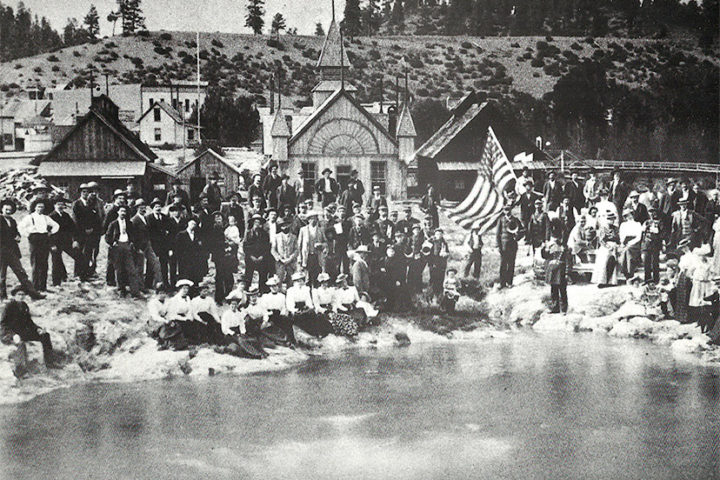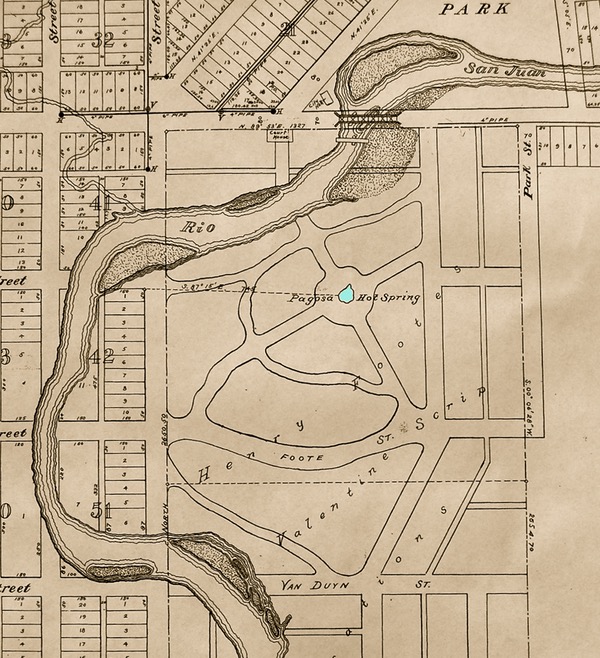People had a need for pleasant distractions in 1944, as America’s involvement in World War II dragged on into its fourth deadly year… and Hollywood actors, singers and dancers were crucial to providing those distractions.
Among them, Bing Crosby.
Bing and the Andrews Sisters had scored a mega-hit earlier that year, with a recording of an old Cole Porter song, “Don’t Fence Me In”, so when the U.S. Navy wanted to film a “sing-along with the stars” to help lift everyone’s spirits, Bing was (presumably) happy to step up in front of a Navy orchestra and croon his way through a short, 90-second version of his hit song.
Unlike in the Roy Rogers version of this song, shared in Part Three of this editorial series, Bing didn’t pretend to be a cowboy. He didn’t bother to dress in cowboy clothing, or ride in on a horse named Trigger. He didn’t even act like he was particularly excited about singing the song.
Oh, give me land, lots of land, under starry skies above
Don’t Fence Me In
Let me ride through the wide open country that I love
Don’t Fence Me In…
This romantic vision of the American West — wide open spaces, big sky, freedom to roam — must certainly have been embraced by the ranchers and businessmen who arrived in Pagosa Springs during the last quarter of the 19th century. Below is an excerpt from a diary kept by a traveling minister, Joseph W. Pickett, who stopped briefly in Pagosa Springs in the summer of 1878, thirteen years before the town was incorporated… as quoted by John M. Motter in his book, Pagosa Country: The First Fifty Years.

In 1878, the Great Pagosa Spring was artesian, with water spilling out in a steady stream across the travertine meadow. Because the spring itself was much too hot for bathing, ‘pit holes’ had been dug surrounding the mother spring, where the water was left to cool somewhat.
From Rev. Pickett’s diary:
June 8 — I rose early and walked along the beautiful banks of the river. The tents of the Ute Indians were stretched along the bluffs in the opposite side of the river, looking very romantic, their ponies feeding, and their flocks of sheep and goats nearby. The springs send up a dense steam in the cool morning air…
The government retains ownership, one mile square. There are no accommodations whatever. I had a charming bath, though my pit hole was most too hot.
I had a nice breakfast — ham and eggs, goat’s milk, furnished by the Indians. These mountaineers will not take a cent for anything. When I went to catch my pony, I saw a man fishing. He drew out the largest mountain trout I ever saw, a speckled beauty of over two pounds, that made my mouth water.
Now I am in another of the smiling valleys, sweet as the fields of Paradise, a green lawn, uncropped, bordered with hills of yellow pines, and above all, the deep blue sky with great white rolling clouds…
When I first visited Pagosa Springs, 110 years later, the Ute Indians were no longer camping with their sheep and goats near the Pagosa hot spring, and the spring itself was no longer steadily overflowing from artesian pressure. Numerous downtown wells had apparently affected the behavior of the geothermal aquifer.
The trout were much smaller and had been stocked into the river, annually, by a group of downtown business owners.
But the town was still bordered by hills of yellow pines. The sky was still deep blue with great rolling clouds.
Rev. Pickett did not mention Pagosa’s birds in his 1878 diary entry, nor did he make mention of ‘wetland’ areas adjacent to the mother spring, but a government survey map of a proposed town drawn in 1883 — based upon the work of U.S. Deputy Surveyor Benjamin H. Smith — displays what appear to be wetlands all along the downtown stretch of the San Juan River.

The park-like area in the center of the above map detail is now owned mainly by Kansas City-based EPR Springs Holdings, represented by Texas-based developer David Dronet. In 1883, the plan was to create a government-run convalescent hospital for Civil War veterans, who could benefit from the healing powers of the sulfur-smelling geothermal water. For whatever reasons, the U.S. government eventually abandoned the idea, and the area around the mother spring became private property.
Although some of the (apparent) wetlands shown in the 1883 map no longer exist, I find it somewhat astonishing that 10 acres of precious wetlands along the river are still protected, in 2022, by the Town of Pagosa Springs.
Presumably, the birds and other wildlife that make use of the warm-water wetlands, either year-round or during their migrations also find the continued existence of this special environment to be somewhat wondrous, considering the way wildlife habitat has been decimated, typically, all across the planet.
Some people have proposed that the Pagosa wetlands is a tourist attraction, and has economic value. We heard those types of claims last week at the Town Planning Commission meeting, coming from both the Pagosa Wetland Partners and from developer David Dronet.
Presumably, the birds and other wildlife that have lived in, or benefited from the continued existence of, the San Juan River wetlands, are less concerned about the tourist economy.
Speaking for myself, I am seriously concerned about the tourist economy, when it acts as an environmental bulldozer.
